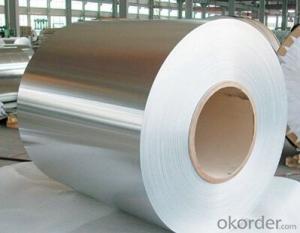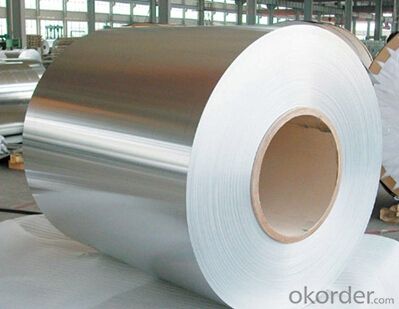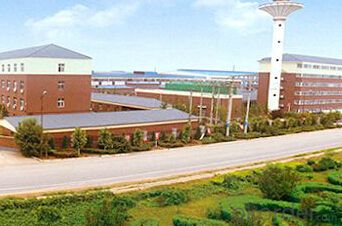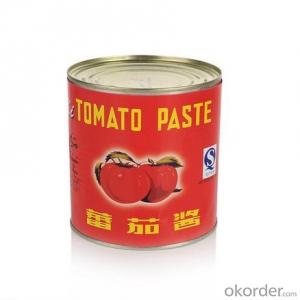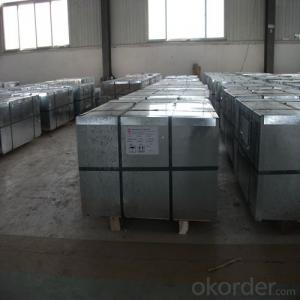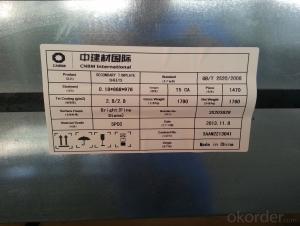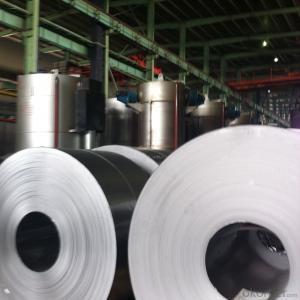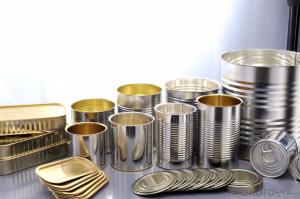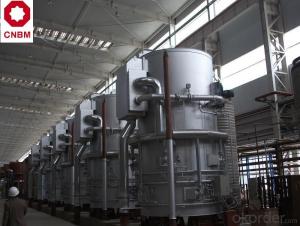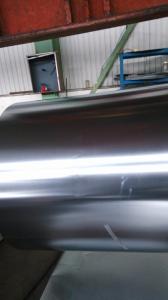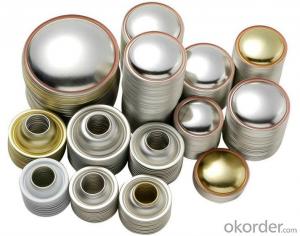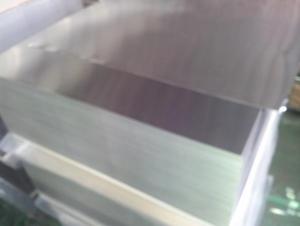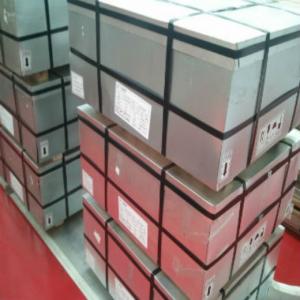Tin Free Steel SPCC Grade for Paint Can Use
- Loading Port:
- China main port
- Payment Terms:
- TT OR LC
- Min Order Qty:
- 25 m.t.
- Supply Capability:
- 30000 m.t./month
OKorder Service Pledge
OKorder Financial Service
You Might Also Like
1. Products: Tin Free Steel
Tinplate and TFS are widely used for making all types of containers such as artistic cans, tea cans, painting cans, chemical package cans and metal printing etc. Its applications are not limited to containers; recently, they have also been used for making electrical machinery parts and many other products.
2. Specification:
Our goods enjoyed high quality both at home and abroad. We can supply tin free steel as follows:
Technical standard | JISG3315 and GB/T24180 - 2009 (BS EN 10202:1990) |
Steel Type | MR / SPCC |
Thickness | From 0.15mm to 0.50mm (Tolerance +/- 0.01mm) |
Width | Normally 600-1050mm (Tolerance +3/-0 mm) |
Coating | Total chromium min 30mg/m2 max 140mg/m2 |
Temper & Annealing | T1-T5, DR7-8, TS230-TH435, T49-T65(+/- 4) |
Surface Treatment | Bright & Fine Stone & Stone & Silver & Matt |
Payment terms | Letter of Credit (L/C), Telegraphic transfer (T/T) |
Price terms | CFR & CIF price term |
Delivery time | Within 60 days after received L/C or T/T down payment |
Packing | High quality shipping packing which contains thin plastic film, rust-proof paper, metal cover, metal angles and strap sand pallet. |
Minimum order Quantity(MOQ) | 25 metric tons (1X 20'' container) |
3. Pictures:
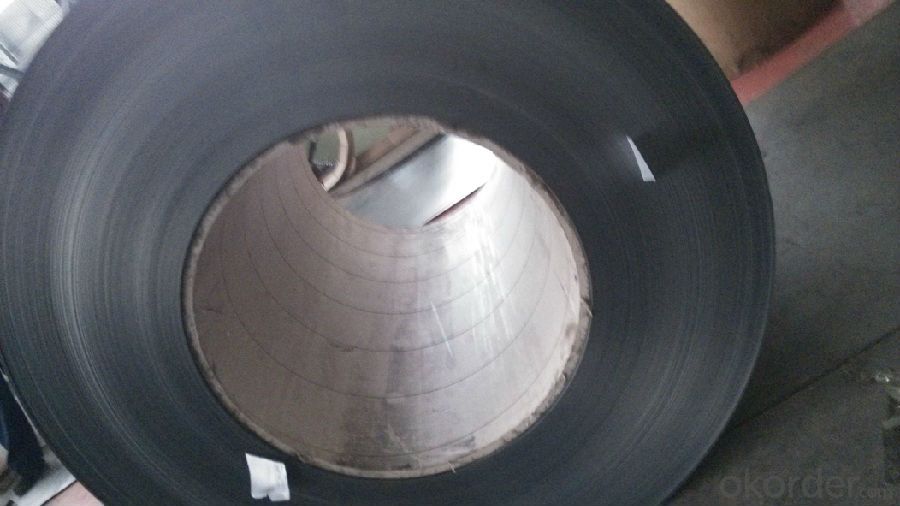
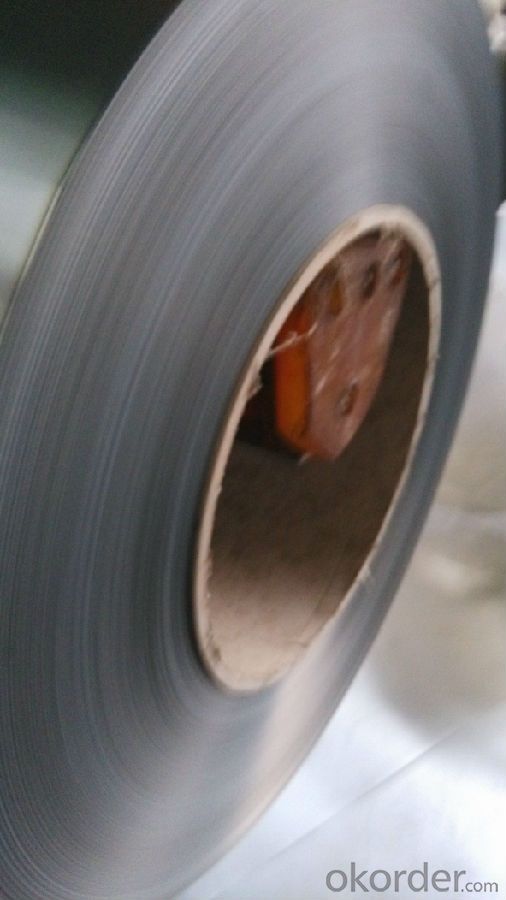
4. Features of the factory price/ tin free steel/tinplate/tfs/tmbp/etp/spte:
Beautiful Appearance
Excellent Paintability & Printability
Excellent Formability & Strength
Excellent Corrosion Resistance
Excellent Solderability & Weldability
5. FAQ:
We are one of the main producers in China for tinplate, tin free steel and also TMBP. At present, our productivity is more than 450000 MT/year.
For more information about our products or company, pls contact us freely.
- Q: Can tinplate be used for bakery packaging?
- Yes, tinplate can be used for bakery packaging. Tinplate is a type of steel coated with a thin layer of tin, which provides excellent protection against moisture and oxygen. It is commonly used in the food industry, including bakery packaging, as it helps preserve the freshness and quality of baked goods. Additionally, tinplate is durable, recyclable, and has good heat resistance, making it suitable for bakery packaging requirements.
- Q: What are the main challenges in tinplate welding and soldering?
- The main challenges in tinplate welding and soldering include achieving proper adhesion due to the thinness of the tin coating, ensuring the cleanliness of the surface to prevent contamination, and controlling the heat input to avoid warping or damaging the tinplate material. Additionally, the low melting point of tin can make it prone to overheating or burning, requiring careful temperature control during the welding or soldering process.
- Q: How is tinplate recycled and what are its recycling rates?
- Tinplate, which is commonly used for food and beverage packaging, is recycled through a process called steel recycling. The recycling of tinplate involves collecting and separating it from other waste materials, followed by shredding, melting, and refining to produce new steel products. Tinplate has a high recycling rate, with approximately 80-90% of tinplate packaging being recycled globally. This high recycling rate is due to the fact that tinplate is a valuable material that can be easily and efficiently recycled, reducing the need for raw materials and minimizing environmental impact.
- Q: How does tinplate packaging contribute to product protection against light?
- Tinplate packaging contributes to product protection against light by providing a highly effective barrier that prevents light from reaching the product. The tin coating on the steel substrate acts as a reflective layer, reducing the amount of light transmission. This helps to shield the product from harmful UV radiation and other forms of light that can cause degradation, discoloration, or spoilage. Additionally, tinplate packaging can be further enhanced with additional protective coatings or lacquers that provide an additional layer of defense against light exposure, ensuring the product remains intact and protected.
- Q: What are the different ways to seal tinplate containers?
- There are several ways to seal tinplate containers. Some common methods include using adhesive seals, heat sealing, crimping, or soldering. Adhesive seals involve applying a layer of adhesive to the container's lid, which is then pressed onto the container to create a secure seal. Heat sealing utilizes heat to melt a layer of plastic or wax on the lid, creating a tight bond when cooled. Crimping involves folding and pressing the edges of the container and lid together to create a tight seal. Soldering, on the other hand, uses a heated soldering iron to melt solder onto the seams of the container, creating a strong and permanent seal.
- Q: What are the key factors to consider when choosing tinplate for packaging?
- The key factors to consider when choosing tinplate for packaging include its level of corrosion resistance, strength and durability, suitability for food contact, recyclability, and overall cost-effectiveness. Additionally, factors such as the required shape and size of the packaging, printing and design options, and the desired shelf appeal should also be taken into account.
- Q: What is the cost of tinplate compared to other packaging materials?
- The cost of tinplate is generally higher compared to other packaging materials such as aluminum, paper, or plastic. Tinplate is a durable and versatile material, but its higher cost is primarily due to the production process involving coating steel with a thin layer of tin. While other materials may offer a more cost-effective solution for certain applications, tinplate's unique properties and premium image make it a preferred choice for certain industries like food and beverages, cosmetics, and pharmaceuticals. Ultimately, the cost of tinplate should be evaluated in relation to the specific needs and requirements of the packaging project.
- Q: Can tinplate be used for outdoor signage?
- Yes, tinplate can be used for outdoor signage. Tinplate is a durable and weather-resistant material, making it suitable for outdoor applications like signage. It is resistant to corrosion and can withstand various weather conditions, making it a reliable choice for long-lasting outdoor signage.
- Q: What are the advantages of using tinplate for medical packaging?
- There are several advantages of using tinplate for medical packaging. Firstly, tinplate is highly durable and provides excellent protection to the packaged medical products. It is resistant to corrosion, ensuring the integrity and safety of the contents. Secondly, tinplate is lightweight yet sturdy, making it easy to handle and transport. This reduces shipping costs and prevents damage during transit. Additionally, tinplate is impermeable to moisture, oxygen, and light, providing a high level of product protection and extending the shelf life of medical supplies. Lastly, tinplate is recyclable and has a low environmental impact, making it a sustainable choice for medical packaging.
- Q: How is tinplate affected by exposure to UV light?
- Tinplate is not significantly affected by exposure to UV light due to its protective coating of tin, which acts as a barrier against UV radiation.
Send your message to us
Tin Free Steel SPCC Grade for Paint Can Use
- Loading Port:
- China main port
- Payment Terms:
- TT OR LC
- Min Order Qty:
- 25 m.t.
- Supply Capability:
- 30000 m.t./month
OKorder Service Pledge
OKorder Financial Service
Similar products
Hot products
Hot Searches
Related keywords
